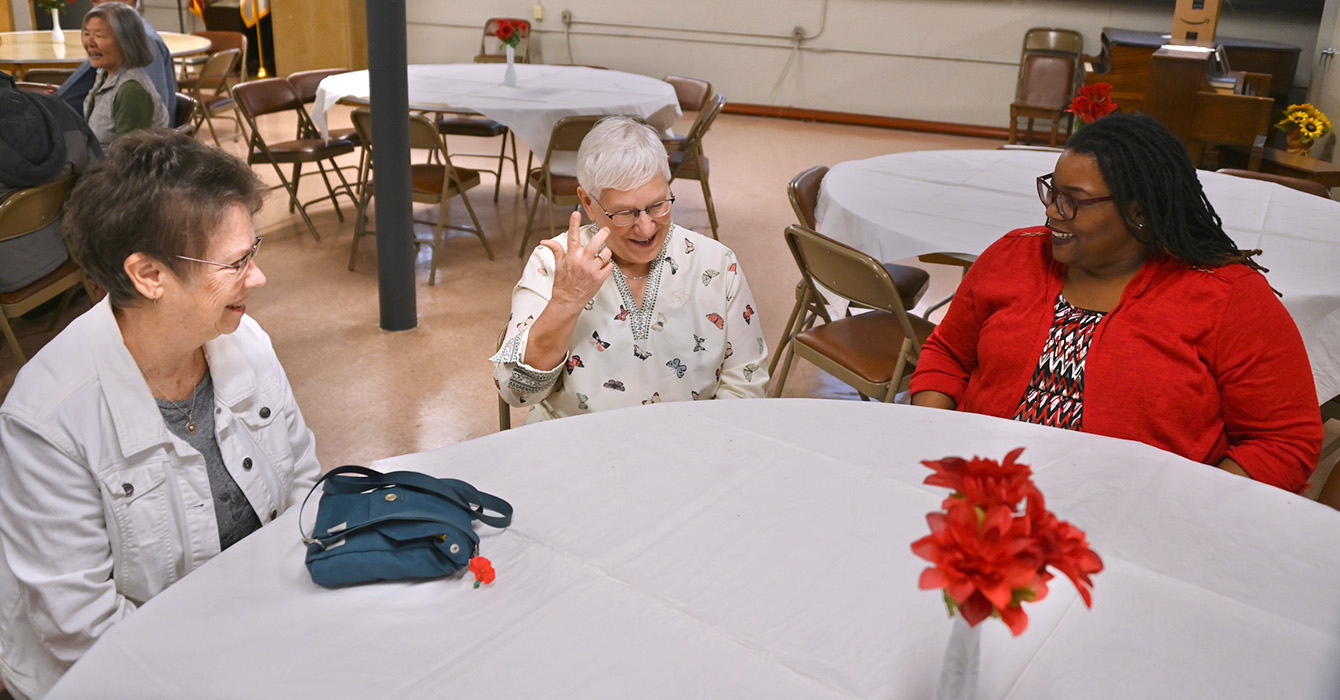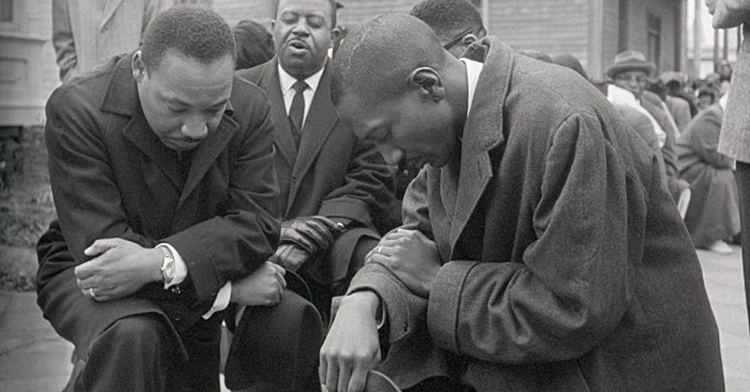This past Christmas, I had a group of 14 over for dinner. My guests ranged from 17 to 60 years old and included old friends, their adult children, boyfriends, girlfriends, a few teenagers, an engaged couple and a hyperactive dog. A seating chart was going to be crucial.
When I had finished arranging the place cards, I hoped that everyone would be seated next to someone who made them comfortable and across from someone interesting to talk to. I placed those involved in cooking near the kitchen and those of a certain age near the bathroom.
The older guests were seated so they would face something pleasant to look at, like the nativity set on the buffet, while my 17-year-old son was consigned to straddling the double set of legs at the awkward junction where the card table met the dining room table.
Some might accuse me of overthinking. But to me, such attention to seating is a necessary part of the hospitality we offer others. Setting tables with intentionality is a holy practice that demonstrates not only our care for the people and the event but also our expectation that God will be present in the coming together.
This same care is needed whether we are gathering people in our homes or at a church or another Christian institution.
How can the ways in which we convene reflect our goals and Christian values? Setting a good table requires attention to at least three important considerations: managing power dynamics, cultivating crucial conversations and caring for people’s comfort.
Managing power dynamics. Dynamics of power -- in the form of race, gender, sexual orientation, denomination, profession, role, and so on -- are at play whenever people gather and must be carefully managed.
For instance, I usually seat denominational leaders at tables with others of similar power, perceived or otherwise. Uneven power dynamics can change the ways in which participants feel able to contribute. Likewise, I try to ensure that those whose voices have traditionally not been heard have allies at their tables who will support and sustain them.
When we attend to power dynamics around the table, diversity of all kinds becomes a leaven for good conversation. When we meet and talk with others who are not like us in some way, we are opened up to a fuller image of God, we learn humility, and we are required to listen more deeply. If your event involves multiple tables, does each table reflect the most diversity your group has to offer?
Another power dynamic relates to who is seated near the front of the room and who is in the back. Perhaps you can place people who have traditionally not been heard near the front of the room. Some introverts may appreciate being near the back.
For longer events, changing seating every few hours gives people a variety of experiences and partners in the space. Perhaps you can send the speakers to the other side of the room for the “second half,” the way basketball teams switch baskets halfway through a game.
Cultivating crucial conversations. What kinds of conversation need to take place? Who needs to talk? Who needs to listen? Who needs to overhear? Which people need to connect or meet? Perhaps they share a concern, live in the same city, or could be of help to one another. When we arrange a thoughtful seating chart, we are acknowledging the importance of such conversations.
In her book “Turning to One Another: Simple Conversations to Restore Hope to the Future,” Margaret J. Wheatley writes: “Be brave enough to start a conversation that matters. Talk to people you know. Talk to people you don’t know. Talk to people you never talk to. … Remember, you don’t fear people whose story you know.” A thoughtful seating chart can facilitate conversations that matter.
It’s also important to consider the energy level at each table. If you know your guests, you can balance extroverts, introverts and ambiverts to keep the energy flowing. Is there an enthusiastic talker who needs to be moved around a bit, so that no one table gets cranky?
Caring for people’s comfort. Finally, creating a seating chart honors the fact that we are embodied people. For whatever reason, you have gathered this group of people in a room, not on Skype or a conference call. One way to acknowledge that this is a gathering of bodies is by showing care for those bodies.
Be intentional: Who tends to be restless, jumping up to get more coffee? Whose bad back requires him to stand every hour? Which new mother needs to slip away to pump? Who is likely to be expecting a call from his child’s school? Who is arriving late or leaving early? These variables may require placing particular people near the door, the wall or the refreshments.
I begin my reflection on these concerns in prayer and continue in prayer as the seating chart unfolds, respecting each person and his or her reasonable needs.
Sometimes my prayers remind me that I am not in control. Things happen. Flights are canceled, people show up late, and someone just sits somewhere else to see the dry-erase board better. Seating charts can be thrown off for a number of reasons; perhaps God has something else in mind.
Leonardo da Vinci knew that seating charts were important.
In his famous painting “The Last Supper,” he arranged the 12 disciples around the table in four groups of three. Starting on the left we see Bartholomew, James the Minor and Andrew. The second trio from the left is Judas, Peter and John. The trio to the right of Jesus includes Thomas, James the Greater and Philip. The final trio on the right is Matthew, Thaddeus and Simon.
Some scholars say that the four groups represent the four Gospels, and the groupings of three, the Trinity. All the lines in the painting lead the eye to the center of the table, to Christ.
Da Vinci used his seating chart to reflect important aspects of the Christian faith. We don’t have to be great artists to take similar care.














